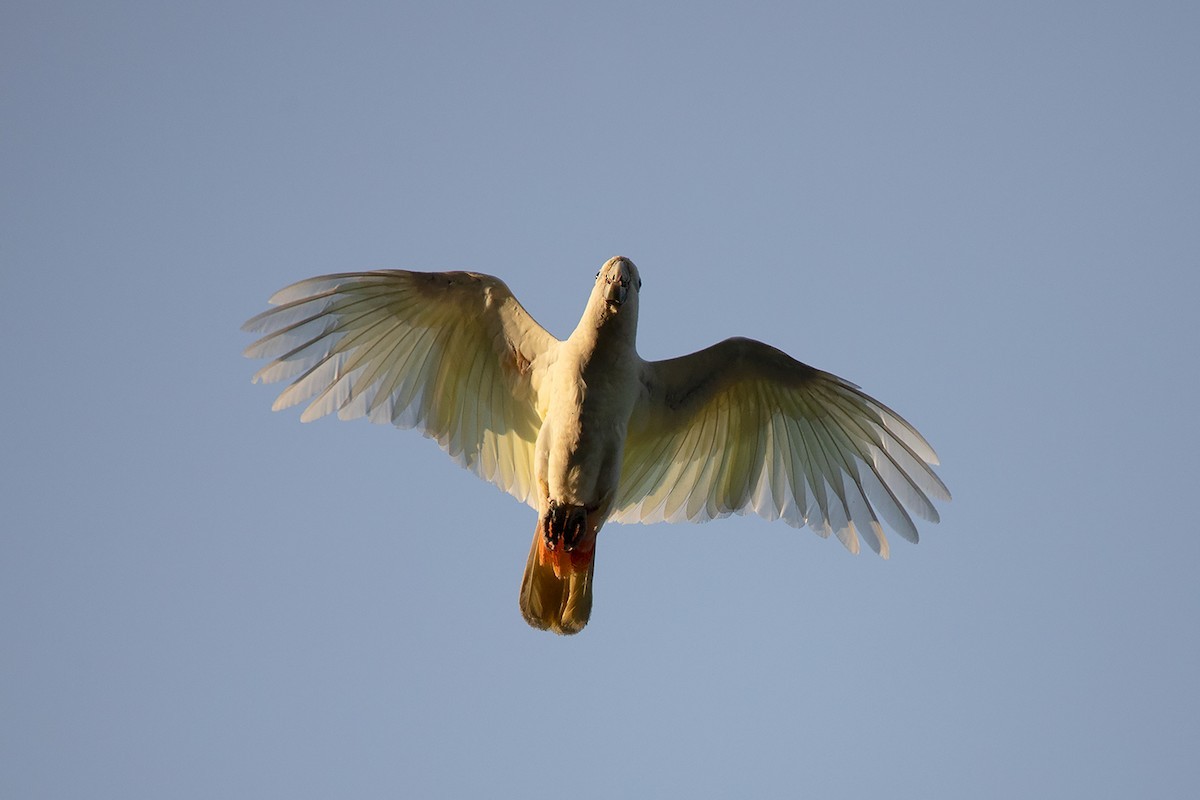Red-vented Cockatoo
A species of White Cockatoos and Corellas Scientific name : Cacatua haematuropygia Genus : White Cockatoos and Corellas
Red-vented Cockatoo, A species of White Cockatoos and Corellas
Botanical name: Cacatua haematuropygia
Genus: White Cockatoos and Corellas
Content
Description General Info
 Photo By Ayuwat Jearwattanakanok
Photo By Ayuwat Jearwattanakanok Description
The plumage is all white with red undertail coverts tipped white, yellowish undertail and pale yellow underwings. It is 12 inches (30 cm) long and has an 8.6-inch (22 cm) wingspan. The red-vented cockatoo makes a characteristic bleating call, as well as screeching or whistling noises that are common to most cockatoos. It is quieter than most cockatoos, and much quieter than the umbrella cockatoo or Moluccan cockatoo. 
Size
31 cm
Nest Placement
Cavity
Feeding Habits
Red-vented Cockatoo predominantly consumes seeds, fruits, nuts, and berries, including crops like ripening maize and wild bananas. It often forages in groups, raiding fields alongside other parrots, indicating a preference for varied plant-based foods.
Habitat
The red-vented Cockatoo typically resides in diverse ecosystems, including dipterocarp forests in rolling terrains and mangrove swamps. While known to adapt to altered landscapes, they frequent forest edges and agriculture fields such as maize plantations during the non-breeding season.
Dite type
Omnivorous
General Info
Feeding Habits
Bird food type
Distribution Area
Red-vented cockatoos were formerly widely distributed on all larger and many smaller islands of the Philippines, excluding northern and central Luzon. In the early 1990s the total wild population was estimated at 1000–4000. However, by 2008 this was reduced to probably less than 1000. Remnant populations exist on the islands of Palawan, Tawitawi, Mindanao and Masbate. The species' stronghold is the Palawan Faunal Region where the Katala Foundation has been running the Philippine cockatoo Conservation Programme since 1998. There are around 180 found in wilderness conservation in the municipality of Narra and Puerto Princesa, Palawan, particularly in Rasa Island. The efforts for conservation of the Katala Foundation are threatened by plans to build a coal-fired power station on Palawan's coast. Environmental organizations like the Katala Foundation or Rainforest Rescue are trying to prevent the construction. A captive population is bred by Antonio de Dios's Birds International near Manila. This bird is critically endangered. Populations have decreased dramatically due to illegal trapping for the cage-bird trade. The high price fetched per bird (c. US$160 in Manila in 1997) means that chicks are taken from virtually every accessible nest. Other contributing factors are loss of coastal habitat and persecution as an agricultural pest. 
Species Status
The red-vented cockatoo is a social species which roosts, feeds, and flies in noisy groups but during the mating season, from March to July, pairs live apart from the flock. They feed on seeds, and, to a lesser extent, on fruits, flowers, buds and nectar. The species is very adaptable and even forages on crops, particularly rice, when half-ripe, and corn, hence becoming regarded a pest. 

 Photo By Ayuwat Jearwattanakanok
Photo By Ayuwat Jearwattanakanok